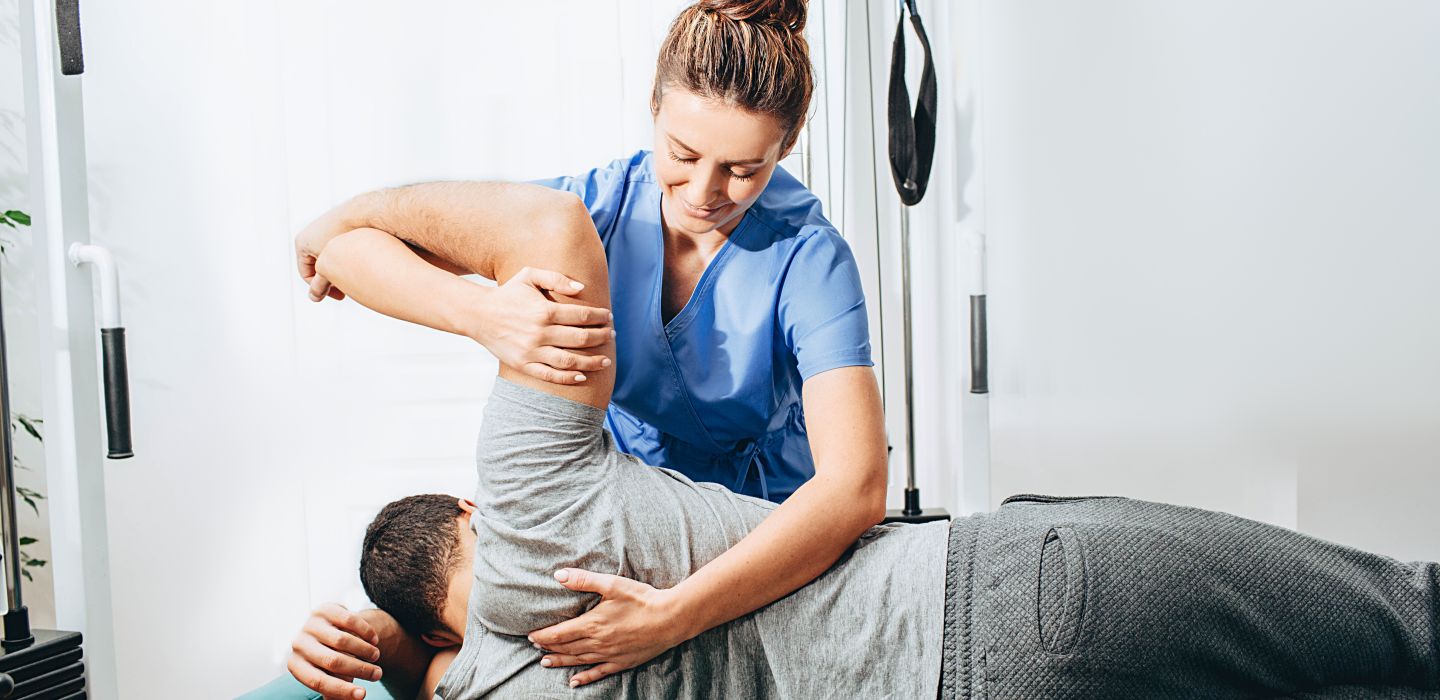CRICOS Code 087942A
Students must complete the following core units and one elective unit with a Course Weighted Average of 65%:

Stage 1: 2-3 Trimesters (8-12 months)
Stage 2: 2 Semesters (12 months)
Curtin Bentley
Course not available to Australian students
Additional costs may apply depending on your course and stream
(Available to International students only)
Bachelor of Science (Physiotherapy) (Honours)
The Bachelor of Science (Physiotherapy) (Honours) is accredited by the Australian Physiotherapy Council and is recognised by the Physiotherapy Board of Australia, the Australian Health Practitioner Regulation Agency and the Australian Physiotherapy Association. Entry is via the Diploma of Health Sciences.
Upon completing this degree, you will become a qualified physiotherapist who can provide hands-on treatment and create exercise and health management strategies.
Students must complete the following core units and one elective unit with a Course Weighted Average of 65%:
Students must complete the following core units with a Course Weighted Average of 65%:
Semester 1
| Code | Title |
|---|---|
| FPHP1000 | Foundations for Professional Health Practice |
| EIHP1001 | Evidence Informed Health Practice |
| IPP1000S* | Introductory Physiotherapy Practice* |
| AA1005S* | Applied Anatomy* |
Semester 2
| Code | Title |
|---|---|
| IHSP1002 | Introduction to Human Systems and Pathophysiology |
| ICHB1006 | Indigenous Cultures and Health Behaviours |
| IAA1008S/HUMB1008* | Integrated Applied Anatomy |
| FPP1000S/PHTY1001* | Foundations of Physiotherapy Practice |
*Service taught units are units where Curtin College students join Curtin University students in the same classroom. Such units are taught by university staff and Curtin College students will be enrolled as Curtin University students. Curtin University Policies and Processes will apply to these units.
Stage 2 Units – 25 Credit Points Each
In this unit students will engage in reflective practice to build students agency and explore the scope and limits of physiotherapeutic practice within the context of professional practice. Students will be introduced to the practice of creating therapeutic alliance through safe person-centred touch and communication, reflecting on frameworks for care. Blended learning and practical classes that simulate clinical physiotherapeutic interactions will introduce students to the scope of movement problems and manual strategies to assist functional movement. Students will be introduced to clinical reasoning as a problem-solving process.
This unit allows students to integrate anatomical terminology and foundational systems with the understanding of functional human movement to inform clinical reasoning. Students will engage in understanding the neurovascular and musculoskeletal upper limb and trunk anatomy required for the development of physiotherapeutic skills. An understanding of underlying anatomical features will be explored to enable the identification of surface anatomy and palpation for clinical examination and imaging. This unit will involve interactions between peer learning and reflection, cadaveric specimens, imaging, problem solving, and blended learning.
In this unit students will engage in reflective practice to build students agency and explore the scope and limits of physiotherapeutic practice within the context of professional practice. Students will be introduced to the practice of creating therapeutic alliance through safe person-centred touch and communication, reflecting on frameworks for care. Blended learning and practical classes that simulate clinical physiotherapeutic interactions will introduce students to the scope of movement problems and manual strategies to assist functional movement. Students will be introduced to clinical reasoning as a problem-solving process.
The role of empirical evidence in making decisions in health practice. Introduction to different types of research methodologies; measurement; observation; data collection; research ethics; bio-statistical analysis; strategies to understand, question and evaluate evidence.
Introduction to ethical decision making in the context of professional health practice. Application of academic standards and development of skills required for studying at university. Introduction to professional requirements which impact on the safety and quality of client centred service/care when working in a health setting. Examination of differences in Australian and international health systems. Students will learn the value of diversity in inter-professional practice through working in teams. Students will reflect on their learning and begin to develop lifelong learning skills.
This unit introduces students to human systems, their inter-relationships, and their role in maintaining homeostasis and health. The impact of on an individual’s health, function and life quality of injury, dysfunction, stress, or ageing in a system is explored, with reference to an individual’s experience, social determinants and environment (national and international) within a biopsychosocial framework. Key physiological and pathophysiological processes which underpin common diseases and disorders managed by physiotherapists across the lifespan will be explored.
In this unit students will examine culture and diversity within local, national and global, Indigenous populations; impacts of specific policies and historical events on Indigenous Australians and their effects on health and health care access. Students will analyse health outcomes of Indigenous Australians and explore underlying social determinants, and how health professionals can work collaboratively in consultation with Indigenous individuals, families, communities and organisations.